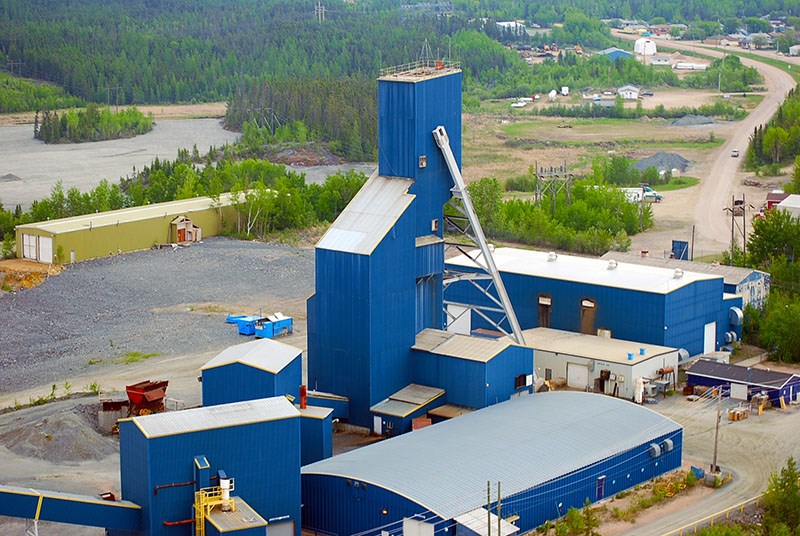It appears when Hudbay Minerals bought the Snow Lake mine on May 4, 2015, they added a new financial obligation to the town along with it. Not only was the company paying the municipality via a payment-in-lieu of taxes agreement for their Lalor operation, but with the purchase of the Snow Lake Mine they took on the tax obligations that went along with that property.
You see, prior to 2015, all Hudbay property – other than housing, offices, and camps, which are taxed – was covered under a payment-in-lieu of taxes agreement, which amounted to $704,000 in 2017. The Snow Lake Mine was not under such an agreement, it was assessed for taxes. When Hudbay closed the transaction to acquire a 100 per cent interest of the Snow Lake mine and mill in 2015, they effectively took on the tax obligations with it – $243,088.87 for QMX in 2012, but only $167,721.00 for Hudbay in 2016.
It was noted during the presentation of the Town of Snow Lake’s fiscal plan back in 2013, that QMX Gold – the then owners of the Snow Lake Mine --– no longer wished to remit annually to the community under the payment-in-lieu of taxes format, instead electing to go the assessment route.
They went on the assessment roll in 2012 and their land and buildings at the north end of Snow Lake was assessed at a little over $4.5 million. As a result, their 2012 tax bill was $243,088.87, over four times as much as their 2011 payment-in-lieu. That tax bill was due to the Town of Snow Lake in August 2012 and as per a public list posted in the town office at the time, QMX Gold was in arrears for the amount.
Little could be established in respect to payment of arrears at that time, or in the period leading up to the acquisition of the property by Hudbay. However, current Town of Snow Lake CAO Ross Gilmore said that all tax arrears were paid by QMX up to the date of January 12, 2014. “Presumably, taxes were again due August 31, 2014,” he added. “However, upon later sale of the land and property to Hudbay, accrued and arrears taxes to the new date were then paid as part of the land sale closing process by Hudbay. Since the date of transfer of ownership, taxes have been paid on time and in full. Consequently, there are no gaps in the tax payment record and no unpaid taxes associated with this property transfer.”
Richard Trudeau, Hudbay’s director of operations support and external relations, concurred. “QMX paid all taxes owing to the Town of Snow Lake prior to the completion of the sale to Hudbay in 2015, including a pro-rated share of the 2015 tax,” said Trudeau in a recent email. “Hudbay’s tax assessment in 2016 was $167,721.00,” he added.
This is where things get a little strange … the Snow Lake Mine/Mill property was initially assessed at a little over $4.5 million in 2012. QMX’s tax bill that year was $243,088.87. Hudbay bought the mine in 2015 for approximately $11 million (US) in net cash consideration, plus a contingent payment of $5 million (US) and their 2016 taxes were $167,721. So basically, inside of four years, the value of the property tripled and the taxes went down $75,000? How could that be, particularly when other community property owners were paying higher tax bills during the same period?
“I have no idea other than the assessment must have changed,” said town CAO Gilmore. “Factors that can lead to changes in assessment are typically changes in property value year to year, and appeals of assessments. Assessment appeals come through our office indirectly through activity of the Board of Revision and participation of council on the board and of the CAOs as secretaries, although, I am unable to find a record of an appeal from Hudbay for that property.”
John Neufeld, who is a public affairs specialist for Communications Services Manitoba, said the following in respect to the discrepancy. “The sale of the mine is different than typical real estate transactions that occur such as houses, farm land or commercial buildings,” Neufeld said in response to a question on the change in taxes owing. “The sale was a purchase of 100 per cent of the shares of the Snow Lake mine and was not registered at the Land Titles Office of The Property Registry. The sale would have included significant non-assessable items such as personal property (equipment). On industrial sites it is common for non-assessable equipment to contribute the majority of value, with the assessable real estate only forming a minor portion of the overall value.”
It was pointed out to Mr. Neufeld that this still makes little sense when one considers that the property assessment was $4.5 million in 2012 when it generated a $243,088.87 tax bill for QMX and that nothing has changed at the site other than the owner and now taxes are $167,721.00. The fact that the property changed hands for the sum of $16 million would indicate that something elsewhere has changed dramatically. Neufeld was asked if the property and buildings were worth $4.5 million in 2012, would they not be worth at least that now? Why would taxes have gone down close to $75K? “A significant contributing factor for the taxes decreasing was the provincial reassessment,” Mr. Neufeld replied. “In the 2014 Reassessment, residential assessments in Snow Lake increased significantly, while the mine and other properties only moderately. Due to the increased overall assessment (tax) base, the Town decreased their mill (tax) rates.”
So basically after the 2014 provincial reassessment, most properties in town were worth more – on paper – than they had been the previous year. For the town to take in relatively the same amount of money, they were forced to drop their mill rate. This benefited some … others, not so much.




